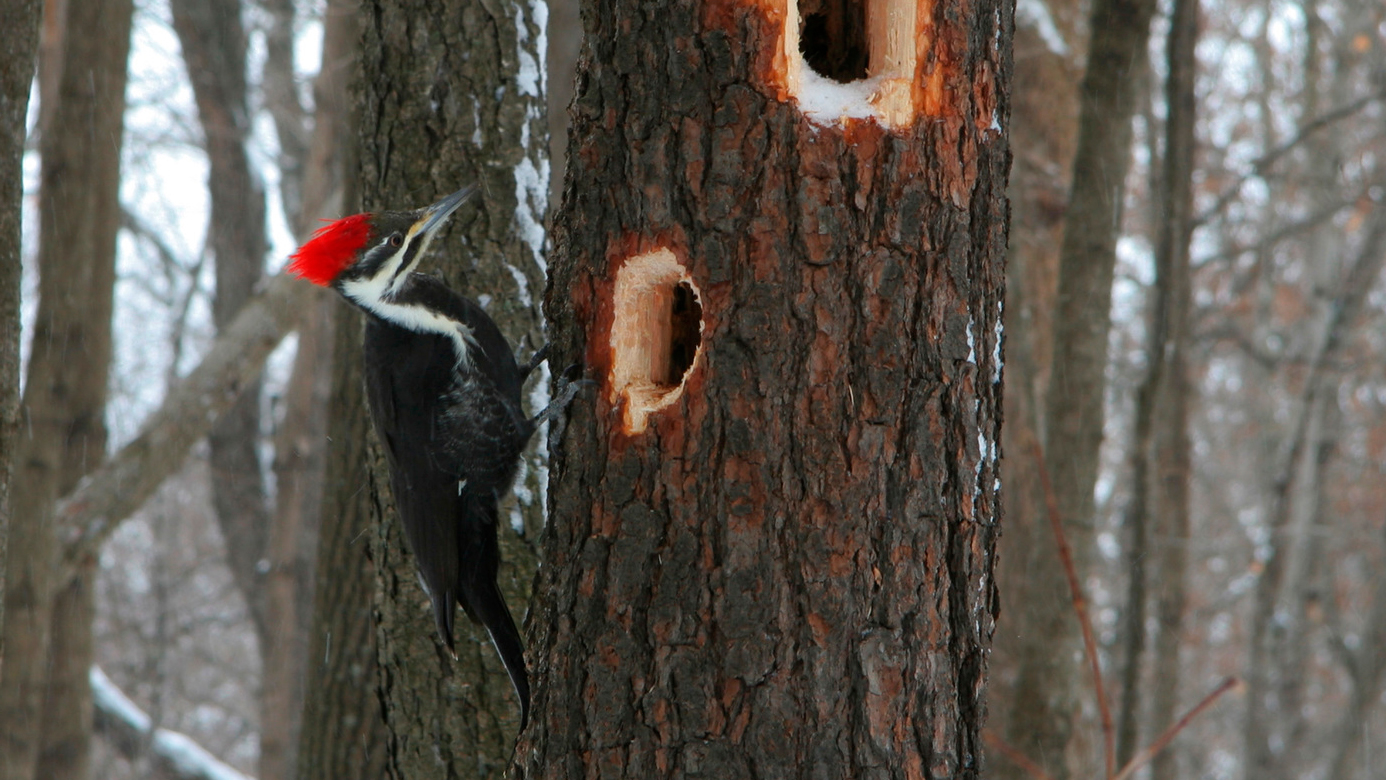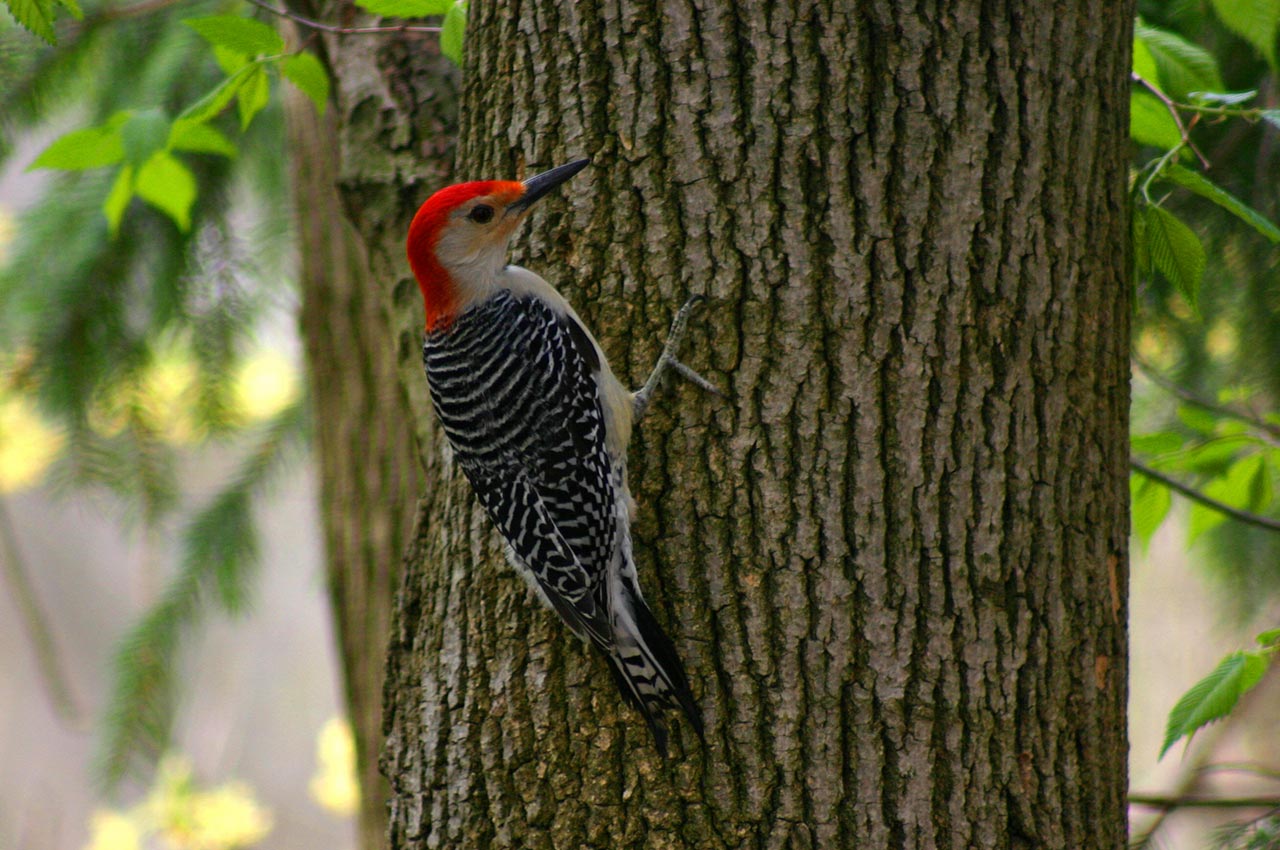Comprehending Woodpeckers in Florida: Behavior, Species, and Habitats
Woodpeckers: A Comprehensive Guide to Understanding These Unique Birds
Woodpeckers, with their distinctive actions and physical attributes, have actually long mesmerized the curiosity of ornithologists and nature fanatics alike. From their balanced drumming echoing through the timbers to their exceptional adaptations for scaling tree trunks effortlessly, these birds offer an interesting study in bird biology. What genuinely sets woodpeckers apart is not simply their striking look but also their crucial function in preserving the fragile balance of ecological communities. As we check out the elaborate makeup, diverse varieties, and environmental value of woodpeckers, a deeper admiration for these special birds and the secrets they hold unfolds.

Woodpeckers' Drumming Behavior
Woodpeckers exhibit a balanced and specific drumming habits that serves various important functions in their day-to-days live. This behavior is largely linked with interaction, territory defense, and foraging. The distinct drumming noise is produced by the rapid pecking of their beaks against tough surface areas such as tree trunks, branches, or perhaps metal things.
Communication is an essential aspect of woodpecker actions, and drumming plays a considerable function in this process. Woodpeckers make use of drumming to establish their presence, draw in mates, and keep call with their partners and children. The frequency, strength, and duration of drumming sequences communicate particular messages to various other woodpeckers in the location.
In enhancement to communication, woodpeckers make use of drumming behavior for region protection. Woodpeckers in Florida. The loud and recurring drumming works as an advising to possible burglars, signaling that the location is already asserted. By establishing their region through drumming, woodpeckers lower the possibility of problems over useful resources such as food and nesting sites
In addition, woodpeckers likewise use drumming as a foraging technique. The balanced pecking helps them find pests hiding under the bark of trees by producing resonances that disrupt the victim's concealment. This habits showcases the flexibility and resourcefulness of woodpeckers in utilizing their drumming abilities for multiple essential objectives.
Unique Adaptations for Tree Climbing
Having mastered the art of drumming to communicate, defend territory, and forage, woodpeckers have developed distinct adaptations that facilitate their amazing climbing abilities in their arboreal habitats. Woodpeckers have zygodactyl feet, with 2 toes pointing onward and 2 toes aiming in reverse. These tail plumes supply stability and balance, enabling woodpeckers to maneuver up tree trunks with precision and agility.
Moreover, woodpeckers have powerful neck muscles and an unique skull framework that help in their climbing abilities. Their solid neck muscular tissues permit them to quickly peck at tree bark without experiencing whiplash, while their thick skull and tiny mind serve image source as shock absorbers, safeguarding them from the impact of duplicated drumming. These adjustments jointly allow woodpeckers to navigate the upright globe of trees with effectiveness and grace.

Function of Woodpeckers in Communities
By foraging for bugs under the bark of trees, woodpeckers assist control parasite populations, preventing outbreaks that could hurt the overall health of the forest. Furthermore, woodpeckers create dental caries in trees that offer as important nesting websites for a range of other bird species, promoting biodiversity within the ecosystem.
Additionally, the drumming and articulations of woodpeckers play an important role in communication and territory facility. These sounds not just offer to draw in mates but likewise help specify borders in between various woodpecker regions, reducing conflicts and advertising an unified coexistence within the forest community. On the whole, the presence of woodpeckers in forest environments highlights their value as keystone species, influencing the dynamics and functioning of these environments in diverse ways.
Composition: Specialized Beaks and Feet
In the complex internet of forest ecological communities, the specialized beaks and feet of woodpeckers are crucial adaptations that allow them to satisfy their crucial eco-friendly Clicking Here duties. Woodpeckers possess special anatomical attributes that are specifically developed to aid them in their foraging and nesting habits.
One of the most distinguishing characteristic of woodpeckers is their solid, chisel-shaped beaks. These beaks are completely adjusted for exploration right into wood to reveal pests, larvae, and sap covert under the bark of trees. The strong muscle mass and durable structure of their beaks permit woodpeckers to peck at a price of up to 20 times per secondly without creating damage to their skulls.
In addition, woodpeckers have specialized feet that aid in their acrobatic climbing abilities. Their feet have two toes aiming ahead and two toes pointing backward, offering a useful content strong hold on vertical surface areas (Woodpeckers in Florida). This special foot plan, together with rigid tail feathers that function as a supportive prop, permits woodpeckers to hold on to tree trunks and branches effortlessly while they look for food or excavate nesting dental caries
Woodpecker Species Diversity
What variables add to the amazing variety of woodpecker species across different environments and regions? Woodpeckers are a diverse group of birds located across different communities worldwide, with over 200 recognized species exhibiting adjustments to various environments. One crucial element driving this diversity is the availability of ideal habitats. Woodpeckers have actually advanced to occupy a variety of atmospheres, from woodlands and forests to grasslands and deserts, each offering one-of-a-kind challenges that have affected the advancement of unique woodpecker varieties.
These adjustments make it possible for woodpeckers to forage successfully in their particular habitats, decreasing competition amongst varieties and promoting specific niche distinction. Additionally, geographical isolation and historic factors have actually played a role in shaping the circulation and diversity of woodpecker varieties, leading to the wide variety of specialized adaptations seen in these interesting birds.

Conclusion
To conclude, woodpeckers are fascinating birds that show distinct drumming habits, specialized adjustments for tree climbing, and play vital duties in ecological communities. Their anatomy, consisting of specialized beaks and feet, permits them to flourish in their setting. With a diverse array of woodpecker types located worldwide, these birds are essential for maintaining the health and balance of woodlands and forests. Recognizing and appreciating the complexities of woodpeckers can offer important understandings right into the environment.